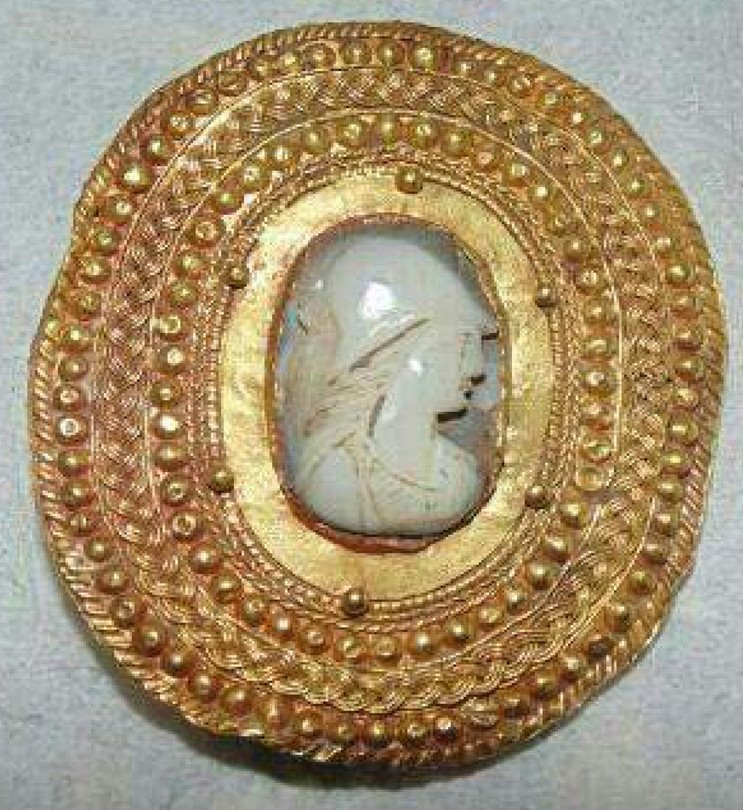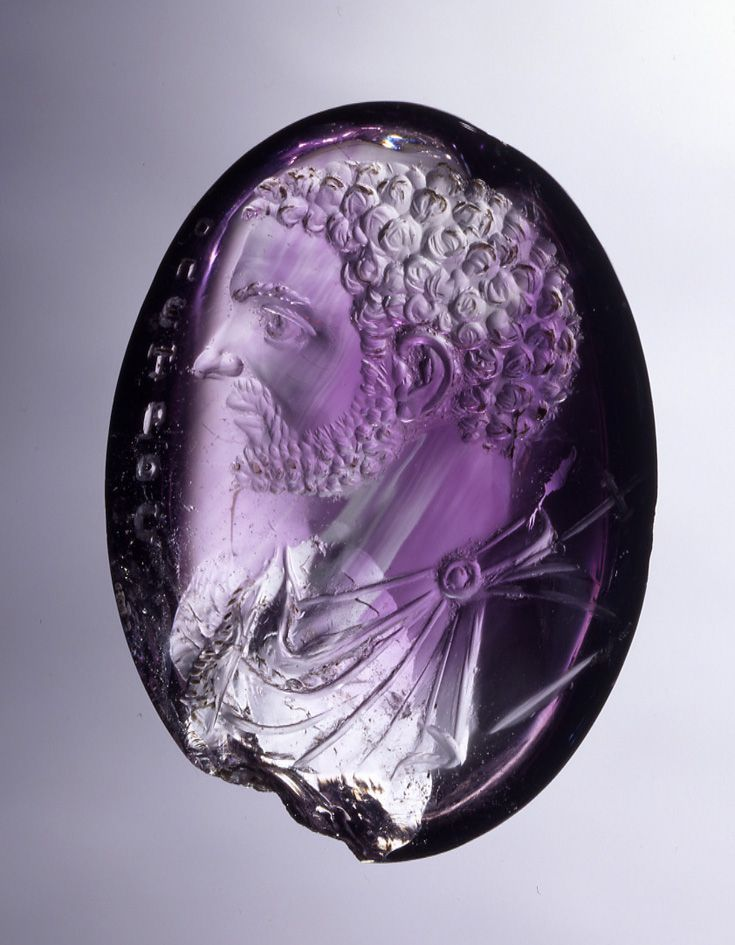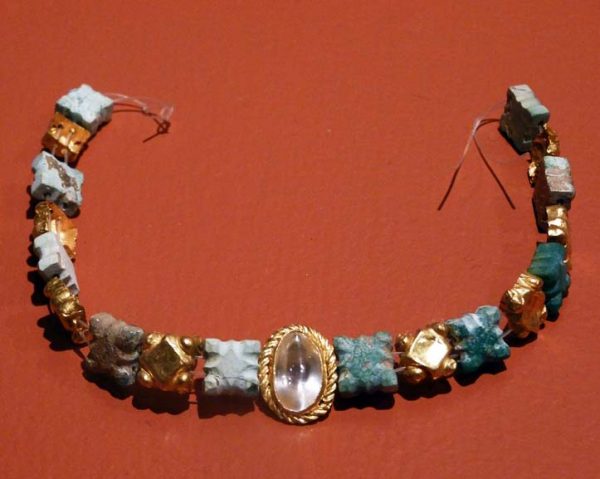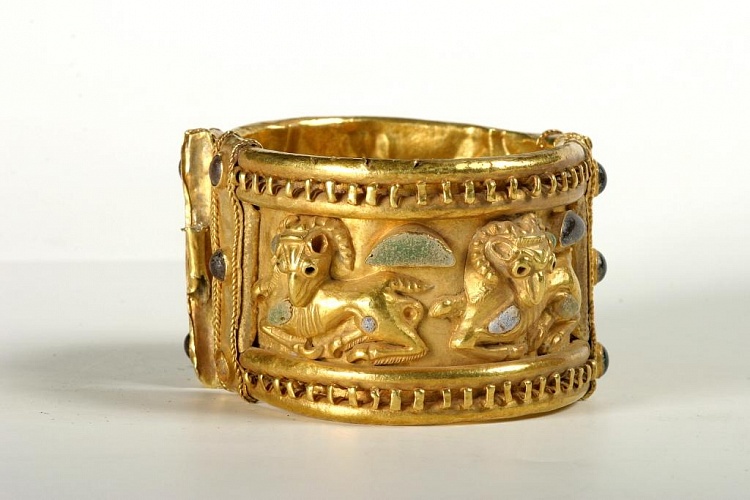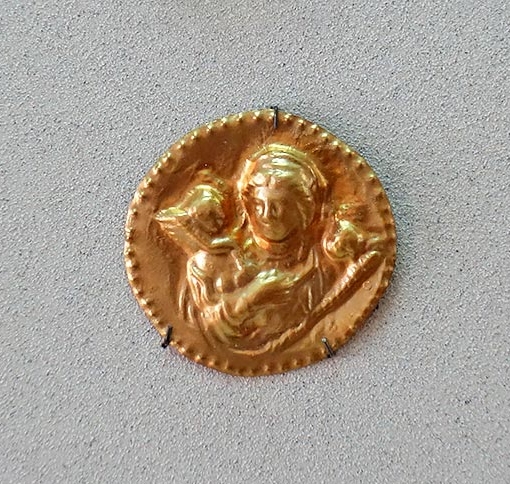Gold bracelet with granulation, garnet insets and relief head of Athena [???]. Hellenistic jewelry. 3rd Century BC – 2nd Century BC. Roman-Germanic Museum (Römisch-Germanisches Museum), Köln, Germany.
Copyright 2016, James A. Glazier
https://www.flickr.com
medallion is placed into the high box shaped setting, there is a clasp at the bottom
According to the b&w card: https://www.bildindex.de/document/obj05712333
Hellenistic / Pontic (Black Sea region). Dating: 1/100?
Collection: Cologne, Roman-Germanic Museum, inventory no. 63.1
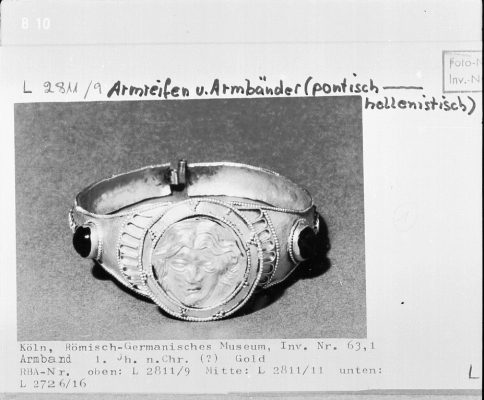

Silver bracelet with the central roundel with repoussé bust of Dionysus in high relief, and very nice ornaments. Hellenistic, 2nd C BCE.
From an auction https://christies.com
“A GREEK SILVER BRACELET
HELLENISTIC PERIOD, CIRCA 2ND-1ST CENTURY B.C.
The central roundel with repoussé bust of Dionysos in high relief, the hinged hoop decorated with grape vine, the rectangular terminals with radiating berried stems
2¾ in. (7 cm.) diam. max.”
Bracelet with a medallion depicting Dionysus from ancient Nicomedia (today Izmit, Turkey); ca. 240 BCE; gold, weight 150 g

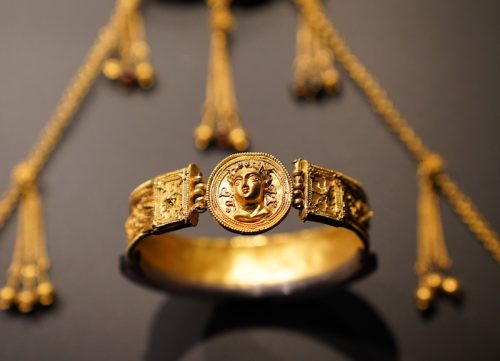

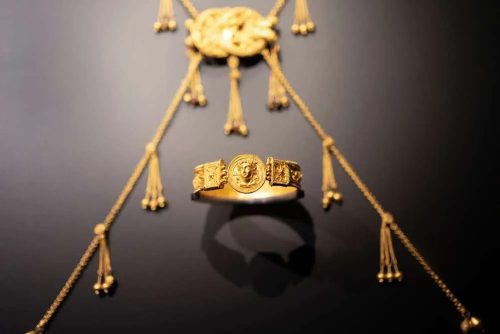
Monica M. Jackson, Stylistic influences of coins on jewellery from the Eastern Mediterranean to Bactria; in Coins and Jewellery: Antiques and Art, 2008 https://search.informit.org
https://www.academia.edu/31640469/Coins_and_Jewellery_Antiques_and_Art
“A decorative Hellenistic gold bracelet excavated in 1963 from a grave in Izmit (ancient Nicodemia) in Asia Minor has a central medallion with an embossed facing head of a young Dionysos in high relief, wreathed in intertwined ivy leaves, fruits and granulated rosettes. He gazes out with eyes wide, pupils clearly defined and lips parted. The disc has a raised edge decorated with beaded wire, typically found on coins. Concentric rows of plain and rope filigree wires surround the central motif. The bracelet has a hinged toggle pin clasp which dates it to ca 240 BCE. Facing heads of Dionysos were first introduced on Greek coinage in the 6th C BCE. Gold bracelet with a medallion depicting Dionysus. Hellenistic 3rd C BCE; in Istanbul Archaeological Museum.”
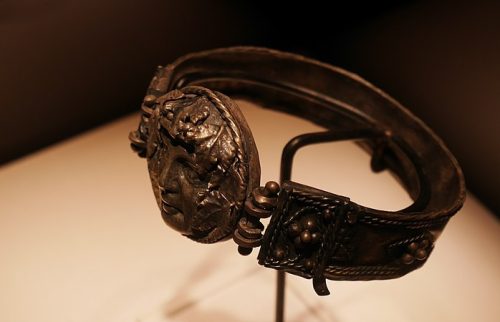
Schmuckmuseum in Pforzheim, Germany

Greek Hellenistic bracelets with a sun god
read more >> https://colorsandstones.eu/2022/12/29/bracelets-wide-cuffs-hellenistic-d-b/
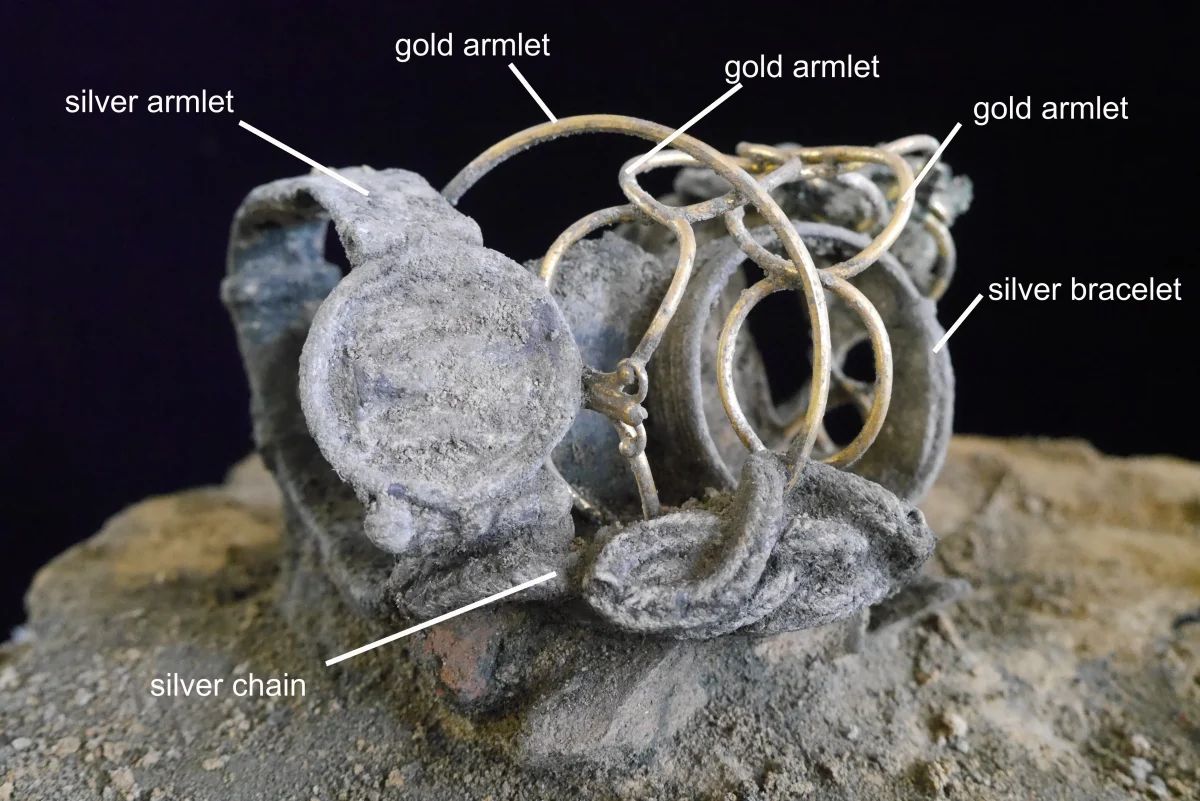

Fenwick Hoard – Roman jewelry found in Colchester, dated 61 AD. Consist of silver & gold jewelry, & coins. The most interesting for me is silver bracelet (armlet) with a central medallion depicting Jupiter seated between goddesses Victory (his right) & Fortuna.
Fenwick Treasure was found under Williams & Griffin store in Colchester buried for safekeeping in the floor of a house. The armlet could’ve been an award for retired solider. On the bands of the bracelet is shown the hunt scene with panthers stalking deer https://thecolchesterarchaeologist.co.uk/?p=14844
Fenwick hoard is now on display at Colchester Castle Museum
>> https://thecolchesterarchaeologist.co.uk/?p=25760 record in @findsorguk

Silver bracelet with an image of Cybele seated on the throne flanked by two lions, and holding a libation bowl. Central medallion is framed as a coin, and there is a crescent around it reminded a lunula pendant. Roman, ca 100-200,
in the MFA Boston https://collections.mfa.org [searching website is down]
Greek, Etruscan, Roman Gold and Silver-II: Hellenistic to Late Antique Gold and Silver; Cornelius C. Vermeule, III
https://www.jstor.org/stable/876666

3rd century silver plated bronze bracelet in the form of a double-headed snake, in the center a silver medallion with a portrait of Heliogabal (Elagabalus), Roman emperor from the Severan dynasty. Upon becoming emperor he took the name Marcus Aurelius Antoninus Augustus. In the Rheinisches Landesmuseum Bonn

Bracelet with two-headed snake holding a medallion depicting the moon goddess Luna (Selene). Pompeii, House of the Golden Bracelet. https://archaeology.org/issues/200-1601/features
VI.17.42 Pompeii. Golden bracelet found on the arm of a woman.
According to Barbara McManus, this remarkable bracelet, 610 grams (21.5 oz) of solid gold, is fashioned in the form of two snakes flanking a round disk with a carved relief of Selene with crescent moon and stars above her head.
It was found on the arm of a woman carrying a casket containing 40 aurei and 180 denarii.
She was killed along with another adult and a child when a balcony collapsed in the house.
Now in the Naples Archaeological Museum. Inventory number 14268.
Silver bracelet found in Dura Europos (private house or military barracks), during excavations by Yale University, in 1933. This bracelet went to the Museum in Damascus.
Source: Prof. Emeritus Michael Fuller, STLCC











